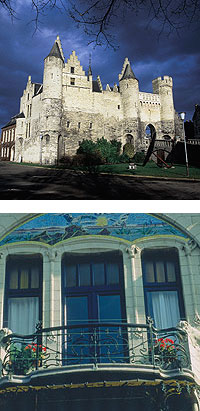Antwerp Getting Around
Getting Around Antwerp - Discover a historic city on foot
Lively and historic, Antwerp is full of inspiring monuments and museums and abundant entertainment that is generally located centrally within a small area. This makes a city break visit perfect for exploring on foot or by its comprehensive public transport system. Much of the old town is closed to traffic which makes sightseeing and shopping for visitors all the more rewarding. The best way of getting around Antwerp is by using the efficient tram and underground metro systems which are simple to use, cheap and convenient for the main hotel district and shopping.
Getting around Antwerp - Seamless public transport
The city has an extensive series of bus routes which serve all the main city routes, suburban areas and outlying towns and villages. The central Rooseveltplaats bus terminal provides comprehensive timetables, route maps and information in English and tickets can be purchased that cover the whole transport system. Cycling is popular and a great way of getting around Antwerp particularly within the central pedestrianised zone and bicycle hire can be found throughout the city. A number of companies offer guided cycling tours of Antwerp that take in visits to museums, art galleries and diamond showrooms and this provides a vivid glimpse of contemporary Flemish life.
Getting Around Antwerp - Exciting day trips by train
Metered taxis are cheap and convenient for getting around Antwerp and give visitors access to some of the more distant attractions not covered by public transport such as some lovely parks and gardens and nature reserves. For day trips to elsewhere in Belgium, Antwerp has two rail stations - Centraal and the stunning Bercham, a tourist attraction in its own right for its wonderful architecture. From here regular services depart to Brussels and Ghent, both just 45 minutes away. Reliable Belgian rail services complement high speed Eurostar trains allowing easy connections and fast journey times from central London.
 |
 |
 |
 |
||
 |
 |
 |
 Antwerp city break search
Antwerp city break search
 Antwerp hotel only
Antwerp hotel only
 Cheap flights to Antwerp
Cheap flights to Antwerp
 Email this page
Email this page
 Add your review
Add your review














